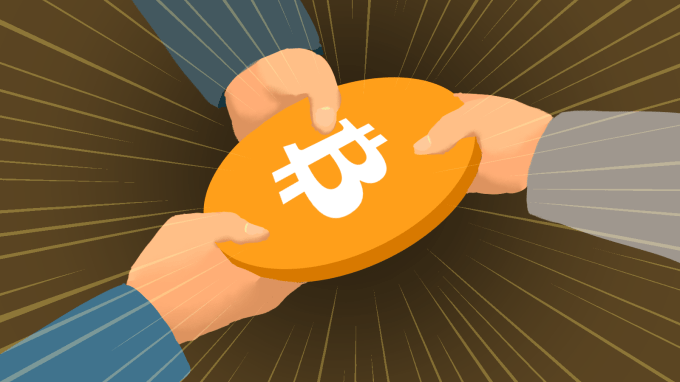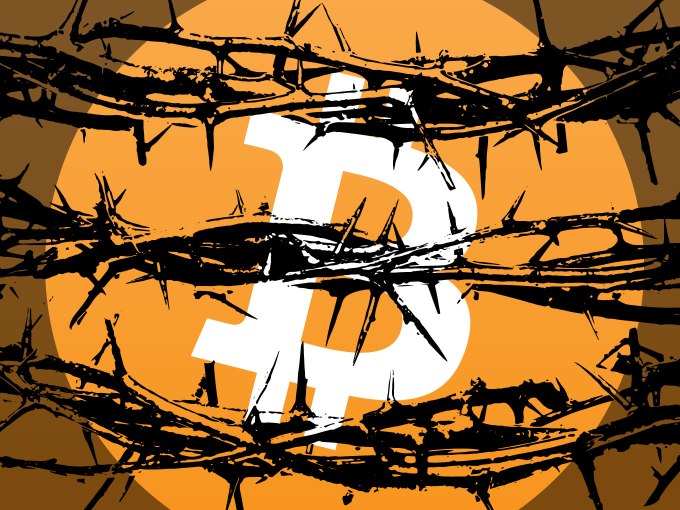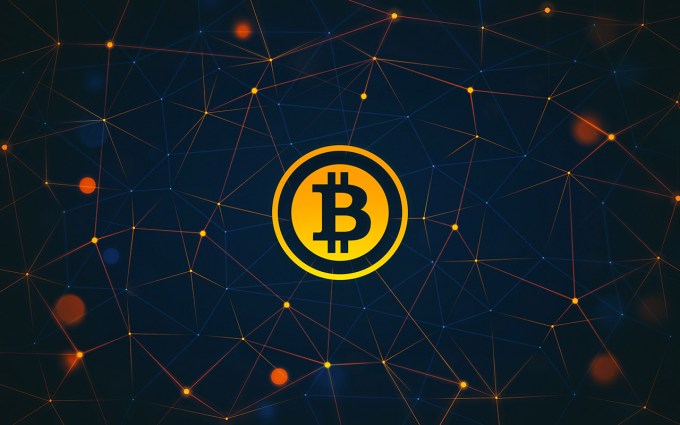A recent rift amongst the developers of Bitcoin, which originally started with a question over increasing the so-called block size (so that throughput of transactions can be increased), exposed deep divides about distributed governance; and has now ironically led to entrenched positions, flared tempers, public insults, accusations and disparaging remarks.
The Rift
The opposing views of those advocating for preserving the current implementation of Bitcoin (Bitcoin Core), and those who believe that the block size needs to be increased immediately to overcome scalability challenges, has balkanized the Bitcoin developer community into mainly two camps.
A dramatic public characterization of this rift came from Mike Hearn’s January blog post on Medium, provocatively claiming that the “Bitcoin experiment has failed” as a consequence of the community’s unwillingness to increase the blocksize:
“Why has Bitcoin failed? It has failed because the community has failed. What was meant to be a new, decentralised form of money that lacked “systemically important institutions” and “too big to fail” has become something even worse: a system completely controlled by just a handful of people. Worse still, the network is on the brink of technical collapse. The mechanisms that should have prevented this outcome have broken down, and as a result there’s no longer much reason to think Bitcoin can actually be better than the existing financial system.”
The price of Bitcoin plummeted to $358 following Mike’s post, but has since recovered to $418 at the time of writing. Alternatives have emerged, such as Bitcoin Unlimited, which has no hard coded block size limit; Bitcoin Classic, which would increase the blocksize to 2 megabytes; and BitPay Core, which would have an adaptive block size limit.
Earlier this month, the various factions convened the Satoshi Roundtable, an invitation-only gathering of fifty or so people, who turned out to be a collection of many of the most important people behind Bitcoin. As a Bitcoin-voyeur I don’t have a horse in the race, but Bain Capital Ventures is invested in several dozen Bitcoin and blockchain startups through the Digital Currency Group.
An unlikely man with an unusual background, Bruce Fenton, conceived and organized the roundtable. Fenton is a self described freedom-loving techno geek. Like many in the blockchain industry he is a free-market economist and advocate for lower regulations.
He’s one of the more connected people in Bitcoin (he was elected chair of the Bitcoin Foundation in 2015) and more surprisingly, one of the rare neutral parties on this issue. He is married, father of four, travels half the year, spends a lot of time in the middle east, almost ran for Congress, and in the past has provided advisory services to some of the world’s largest investors, including Bain Capital.
It’s remarkable that he was able to cajole this group of 50 to invest their own time and money to gather together to resolve this rift. The original vision of the Roundtable was not grand — it was only to be a fun getaway with friends to talk about the industry — but in only its second year it has grown to be a premier private gathering. So the core goal for this year’s roundtable was to try and resolve the rift and have a unified Bitcoin.
Leading up to the event, the community appeared to be supportive. This was in contrast to the first meeting of the Roundtable, where the sentiment appeared to be, “Who are these guys and why are they meeting in secret? Who do they think they are, the Illuminati?” This year, it was, “Do it, guys. Find a resolution.”
The players

There were CEOs of important Bitcoin companies including exchanges, wallets, alternative blockchains and cryptocurrencies. There were CEOs from enough miners (operators of the hashing servers that verify transactions) to represent more than 50% of the hashing capacity of the Bitcoin network (miners can “vote” with their servers on important issues such as which version of the Bitcoin code to run).
But most importantly many of the key open source developers were present (I say “most importantly” because at least for now, they have the greatest control over and strongest opinions about how the Bitcoin technology evolves).
Both contingents of the major rift were amply represented.
On one side of the rift is the Bitcoin Core team, who are contributors to the main Bitcoin source base, and take the responsibility of maintaining and enhancing it, and more importantly, prioritizing the numerous suggestions for enhancement. Adam Back, Matt Corallo, Peter Todd, Eric Lombrozo, Alex Morcos, and Luke Dashjr were the Core developers at the Roundtable.
For over a year, they have taken the stance that making a one-off enhancement to increase the blocksize does not serve Bitcoin well; that yes the block size needs to be increased, but it should be done later, perhaps second or third or fourth, as part of a larger set of important changes. Most importantly, they prioritize high consensus among miners and safety (i.e., upgrading without breaking Bitcoin).
As Matt Corallo put it:
At this point, however, the entire Bitcoin community seems to have unified around a single vision – roughly 2MB of transactions per block, whether via Segregated Witness or via a hard fork, is something that can be both technically supported and which adds more headroom before second-layer technologies must be in place. Additionally, it seems that the vast majority of the community agrees that segregated witness should be implemented in the near future and that hard forks will be a necessity at some point. With the apparent agreement in the community, it is incredibly disheartening that there is still so much strife…
On the other side of the rift are primarily Gavin Andresen, but also Roger Ver, Brian Armstrong, Peter Smith, and various other wallet providers and other CEOs
Gavin’s stance is that Bitcoin is choking under the weight of its own success, and the block size needs to be increased immediately, possibly multiple times. After being unsuccessful in convincing the Bitcoin Core team to prioritize increasing the blocksize, Gavin has created an alternative implementation, called Bitcoin Classic. Bitcoin Classic makes only that one change of increasing the blocksize; some miners think this is thus the safer alternative, purely by virtue of the fact that it consists of vastly fewer changes.
What was discussed
Tensions had been high prior to the Roundtable, but the conversation started off constructively. The group began by finding common ground around two things: (1) a code of conduct, or at least, rules for interactions amongst developers who strongly disagree, and (2) tenets about Bitcoin that everyone agreed on.
There was agreement that the rift was hurting everyone. There was also agreement that Bitcoin splitting into two blockchains would be very, very bad; transactions would be lost or duplicated; that it would be unclear what the real Bitcoin was; that the reputational damage would be significant. Although on the next day when consensus appeared more difficult, there were some contrary opinions that maybe it wouldn’t be so bad because one or the other blockchain would survive as the real Bitcoin. Governance
Governance
Everyone agreed that the problem started off over blocksize (and that still is the immediate problem) but the inability of the community to resolve that problem has surfaced a larger problem: the desperate need for governance. But this is a seriously hard problem to solve because (a) bitcoin is all about decentralization and not having the need to trust a central entity, (b) Bitcoin is not controlled by any one body or even jurisdiction and (c) this group, and the community in general, reacts very negatively to any suggestions for a governance structure or body.
The fifty or so people broke up into seven different subgroups which at times came together and at times separately over lunches, dinners and drinks. A group which included a large miner and a large exchange operator felt that the Hong Kong agreement was fine, as long as the timeline for the block size increase was moved up.
Another group felt that the go-forward goals should be to encourage more companies to mine, to contribute to the decentralization of Bitcoin, with two distinct sub-goals: the decentralization of mining, and the decentralization of nodes.
Periodically the groups reminded each other that they have a credibility problem and that outsiders looking in are not impressed by the impasse.

Over the course of the group discussions, some called for a more civil discourse among the two sides of the debate, while others said that the divergent approaches were not actually mutually exclusive and that both approaches could be executed if the factions could agree upon a timeline.
While some took a defeatist tone, pointing out that some concerns should be so-called Layer 1 concerns (Layer 1 is the fundamental layer of Bitcoin, the layer that this group was concerned with), and some should be Layer 2 concerns (i.e., another layer that takes care of less fundamental things, similar to networking protocol stacks).
They pointed out that some were short-term goals (block size) and some were long-term goals (governance, and how we decide these things in the future).
Over the course of the program, people brought up the need for changes to what’s called consensus rules, the separation of those consensus rules from the rest of the code, and the governance of those consensus rules.
Consensus rules are the code that determines whether there is consensus among the miners, a tallying of votes if you will, which can be used to decide many things, including… wait for it… which fork of the Bitcoin code to run.
A third group proposed that we allow more than just miners to vote, by first rolling out the ability to encode votes in transactions, with parameters such as coin-age to control who gets to vote when. This had been discussed prior to the Roundtable and most people seemed to think that the idea had legs and a variation of the idea could work; but debating which variation was another governance issue.
They warned the Roundtable to not take the hard fork scenario lightly because “nobody really knows what’s going to happen in a hard fork.” They asked everyone to stop looking for a great option, or even a good option, and just find the least bad option. (I am convinced that I was the only one amused by the fact that in the real world, minors cannot vote; while in Bitcoin, only miners can vote. I did not waste the group’s time by making this pun.)
A noted crypto scientist, and creator of one of the other crypto-currencies similar to Bitcoin, suggested that we be open-minded to not reaching compromise, because it’s too hard to negotiate when you’re right next to a cliff:
“Folks, I mean this in all sincerity, we shouldn’t be trying so hard to reach consensus on block size and governance. It’s okay that we will continue to have differing, incompatible opinions and strategies. I think negotiation and compromise is made harder by thinking that there is no alternative, that you have to reach consensus or it’s the end of the world. It’s not the end of the world, and everyone involved knowing what their options are in the *absence* of agreement, and seeing the value in those options, is necessary for real, voluntary cooperation.”

One of the leaders of the Bitcoin Foundation offered, “Governance may not be best term. We do need standardization of the protocol and a widely-accepted roadmap for implementing and releasing improvements. This is hard without a leader, a governance model, or other form of consensus. Perhaps we need to establish a protocol or accepted way of choosing the path forward so we can make progress as a group.”
A few people said, let the miners decide, and let’s be done with this. Others were adamant that that was very narrow thinking. “Miners are very very short term in their views; some of them turn mining on and off by the hour,” one expert added.
The miners present at the Roundtable, interestingly, did not debate this, and did not seem to disagree.
During panels and over poker (where only Bobby Lee, CEO of the Chinese Bitcoin mining company BTCC, had enough Bitcoin, U.S. Dollars, Euros, Renminbi, and cell reception to be the bank for all the players) one other large miner said, “I don’t want this power. Don’t give me this power. I don’t want to be in a position that we have to do a emergency hard fork. The game is over if we have do that. Bitcoin will never be the same. Bitcoin is safer if it’s a simple change. A small change. That’s why we’re supporting Bitcoin Classic, because it’s the smallest simplest change.”
The Gauntlet
Brian Armstrong, CEO of Coinbase, warned that Bitcoin as a protocol and as an industry is in a bad place, a dangerous place. And then he went on to articulate a very, very strong and controversial stance:
“We need a new team working on the bitcoin protocol. Bitcoin Core is a good team. Bitcoin Classic is a good team. But we need a better team — a great team — working on the protocol. I’m thinking of going and doing it.”
I felt comfortable mentioning him by name because he blogged about it later (otherwise we had agreed that we could write about what people said, without mentioning them by name):
But as the conversations went on, Armstrong became less and less concerned about what short term solution we pick because he realized we all had a much bigger problem: the systemic risk to bitcoin if Bitcoin Core was the only team working on bitcoin.
They prefer to withhold something that could help the network now, because they don’t trust the community to make educated decisions in the future. They view themselves as the central planners of the network, and protectors of the people.
Armstrong then outlines a couple of very troubling failure scenarios that we discussed at the Roundtable, and concludes:
If you want to ensure Bitcoin’s success, I’d encourage you to upgrade to Bitcoin Classic in the short term and then do what you can to help with the three step plan I outlined above. This is the best path forward to mitigate the dangerous situation we’ve found ourselves in.
I find the stance impressive and I admire him taking the bull by the horns. Just because we upgrade to Bitcoin Classic now, does not mean we need to stay with Classic forever. It is a risk mitigation option. It’s tough for the average reader to verify the research, though. Particularly, what I think is the crux:
[The Bitcoin Core team proposal] will require not only new bitcoin core code, but also new code to be written by each of the major wallet providers who are generating transactions. It is unlikely this will be done in time to avoid the scaling issue we are currently facing. The number of lines of code that need to be written for this across the entire industry will be several orders of magnitude more than a scaling solution of changing 1MB blocks to 2MB blocks. This was explained to core developers at the conference and it didn’t seem to change their opinion of what the best short term solution was to scaling.
Strong reactions and flames were inevitable. I don’t share the concern that this is Coinbase’s ploy to “take over” Bitcoin — that would be very, very difficult.
The Bitcoin Core team’s perspective on why the Bitcoin Classic proposal is ill-advised is:
- Unlike a soft fork, which is what the Bitcoin Core team is recommending with segregated witness, miners, merchants, developers, and users have never deployed a hard fork, so techniques for safely deploying them have not been tested.
- Hard forks require all full nodes to upgrade or everyone who uses that node may lose money.
- Even a single-line change such as increasing the maximum block size has effects on other parts of the code, some of which are undesirable.
My Conclusions
Bitcoin may be the most important thing happening in fintech right now. The problem of how to govern a cryptocurrency that was explicitly designed to not have a central controlling authority is philosophically intriguing.
I believe that the players involved are well-intentioned reasonable people. All of them have a common goal: to make Bitcoin successful. They just disagree (very, very strongly) on how to get there. There is some ego involved. There is some jockeying for power or control. But there’s enough attention and concern over this problem that I think they’ll work out the short term problem (block size) and begin work on the even more difficult long term task of distributed governance without empowering a central authority.
I put blockchain technology into two categories: (1) the popularity contest Bitcoin needs to win as a store of value (2) everything else. The “everything else” includes other public blockchains, private blockchains, Layer 2 “applications” on public or private blockchains, alternative cryptocurrencies, etc. Category 2 is interesting, and there will likely be a few billion-dollar companies created there. I liken companies in this category to companies such as Docusign or Salesforce.com, i.e., enterprise technology companies that help us do business better. But category 1 is really intriguing because over the next fifty years Bitcoin could develop into the de-facto non-representative non-fiat store of value, even if it’s not the currency we use to transact every day.
As I’ve written before, as a store of value and an alternative to fiat currencies that have been conjured up by sovereigns in which one must put one’s faith, it continues to increase in suitability. In the United States and in western Europe we take for granted the luxury of having institutions — the Federal Reserve and the European Central Bank respectively — that have central banking skill, experience, credibility and competence.
Other central banks are less competent, less independent, more political or corrupt, and most importantly cannot undo the errors of their sovereigns, such as autocratic nationalism, and running economies that are overly dependent on a commodity. This is more readily evident in small sovereigns, often in Africa or Latin America, as their economies fail or currencies devalue.
Central banks are run by people and thus will always be susceptible to such errors, which is why non-fiat representative stores of value such as gold, have a place. And for this reason I continue to think that non-fiat stores of value that are more convenient to manipulate and transport than gold will have a bigger place in the future. Are the reasoned (albeit heated) discussions we are having about the Bitcoin protocol preferable to inexperienced, incompetent, and often opaque central banking? I think so.
It makes sense to buy Bitcoin during the panics, and I’m expecting a few panics over the next few months as things resolve themselves. But then again, I’m a venture capitalist.
